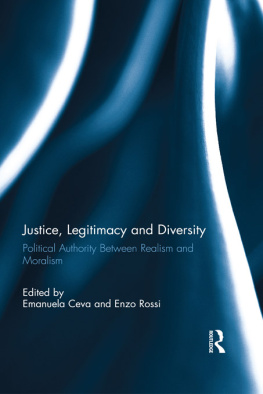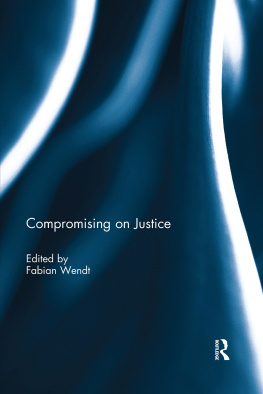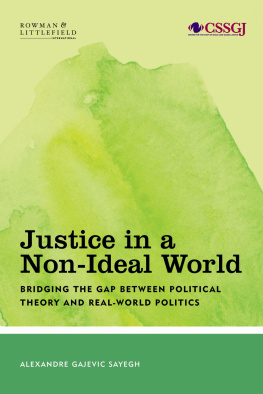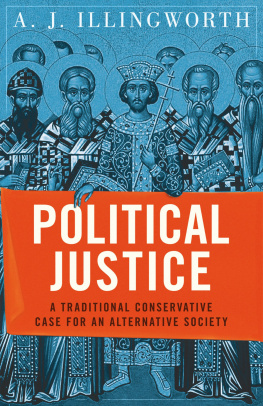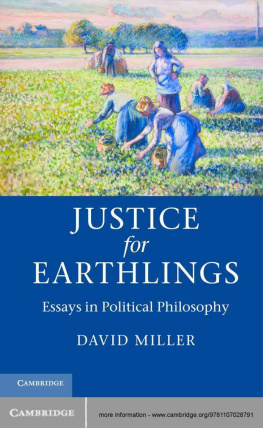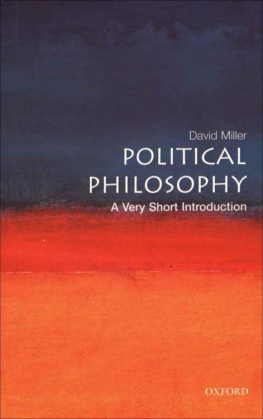Contents
Guide
Page List
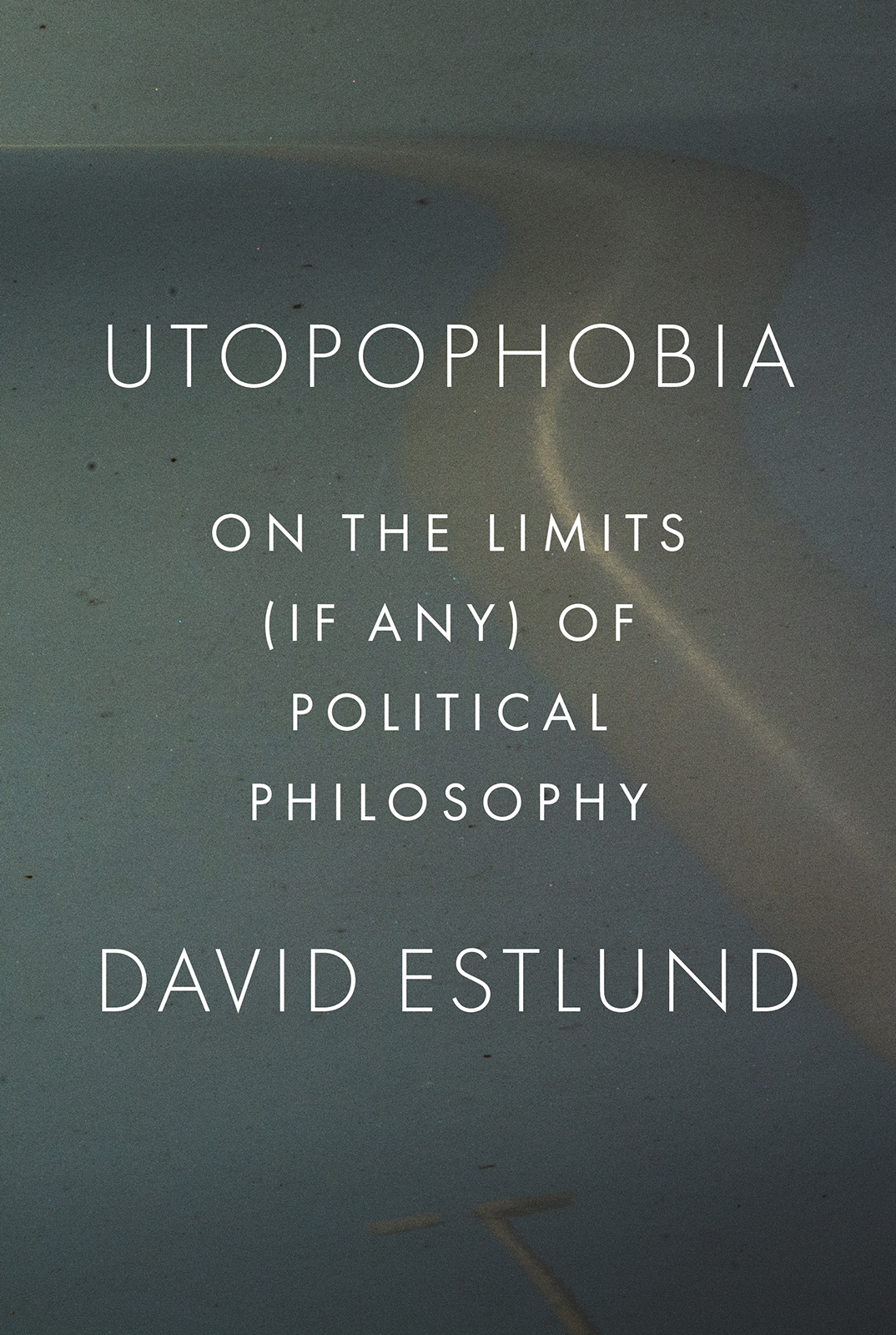
UTOPOPHOBIA
Utopophobia
ON THE LIMITS (IF ANY) OF
POLITICAL PHILOSOPHY

David Estlund
PRINCETON UNIVERSITY PRESS
PRINCETON & OXFORD
Copyright 2020 by Princeton University Press
Published by Princeton University Press
41 William Street, Princeton, New Jersey 08540
6 Oxford Street, Woodstock, Oxfordshire OX20 1TR
press.princeton.edu
All Rights Reserved
Library of Congress Cataloging-in-Publication Data
Names: Estlund, David M., author.
Title: Utopophobia : on the limits (if any) of political philosophy / David Estlund.
Description: Princeton, New Jersey : Princeton University Press, 2020. | Includes bibliographical references and index.
Identifiers: LCCN 2019024586 (print) | LCCN 2019024587 (ebook) | ISBN 9780691147161 (hardback) | ISBN 9780691197500 (ebook)
Version 1.0
Subjects: LCSH: Justice (Philosophy) | Idealism. | Realism. | Political sciencePhilosophy.
Classification: LCC B105.J87 E77 2020 (print) | LCC B105.J87 (ebook) | DDC 320.01/1dc23
LC record available at https://lccn.loc.gov/2019024586
LC ebook record available at https://lccn.loc.gov/2019024587
British Library Cataloging-in-Publication Data is available
Editorial: Rob Tempio and Matt Rohal
Production Editorial: Kathleen Cioffi
Jacket Design: Chris Ferrante
For Corey, Marshall, and Hannah
The sea rises, the light fails, lovers cling to each other, and children cling to us. The moment we cease to hold each other, the moment we break faith with one another, the sea engulfs us and the light goes out.
JAMES BALDWIN , NOTHING PERSONAL
CONTENTS
xi
PREFACE AND ACKNOWLEDGMENTS
THE INSCRIPTION I HAVE CHOSEN for the bookfrom James Baldwins collaboration with photographer and activist Richard Avedonverbally develops a still image, almost photographicnot coincidentally, perhaps. In this image, nature (including our own) both looms and tantalizes, our potential and our proclivities are black and white and in between. But keeping faith is the linchpinthe moral organizes the picture. The elements appear but so does agency, as well as the continuum of value between thriving and tragedy. Baldwins eyes seem moist but wide open. The light may indeed finally go out, but not necessarily. The image is not blinkered by optimism or even by any clear hope. And yet whatever it would take not to break faith, it is hard to believe that it is not deeply political in parthis full text is pervasively politicaland impossible to believe that a political failure to do so would not be a profound moral failure. We could keep the roiling sea at bay, and yet we might not.
The image of holding each other and not letting go evokes an almost lurid idealism about what is needed, framed by an unmistakable realism that holds hope at arms length. On the one hand, the evocation of high standards we are called to is anthemic. On the other hand, knowing what we know, we might fall tragically short. It can often be hard to see both aspects at once, though we can in the Baldwin passage, as integrated features of a single scene. Closing one eye, the scene, while not static, hardens and clarifies into what seem to be the cold facts, the way things are and have been and are becoming, and that is all. If we change eyes, closing the first, the scene may be anything but clear, hardly a single scene at all, yet now it is good. If we walk like this, with only this eye open, we will hit walls and fall over cliffs. But on the first view there was no pull at all, nowhere to go and nothing admired or lamented, just a passing indifferent scene. The difficulty in keeping both eyes open may be that then we see not just the real facts and forcesor at least seem toand also much beauty, but also real deficiency, even tragedy. Of course, our eyes can deceive usthat goes for each, and both, eyes. Even if this visual metaphor has some resonance, that is no proof that our eyes are onto something.
In an oft-quoted early reference to nonideal theory, Aristotle writes, The best is often unattainable, and therefore the true legislator and statesman ought to be acquainted, not only with that which is best in the abstract, but also with that which is best relatively to circumstances. It expresses a stereoscopic view, taking the value of understanding the unattainable best almost for granted before insisting that realistic nonideal thought that concedes injustice and works from there is also important. It seems sometimes to be read as a corrective to some previous thinkers, Plato perhaps, who may seem to neglect the realistic in their focus on the ideal. But Plato wrote in the Laws that,
[C]alculation and experience suggests that the city we are founding will not be absolutely the best possible. And you might be inclined to reject this second-best city, if your only experience is of law givers with tyrannical powers.... [T]he number one city and political system, and the best laws, are those where... every possible contrivance has been used to bring about the total eradication of what is called private from every corner of our life.... A city of that kindI dont know if its inhabitants are gods or a number of sons of Gods.... The one we have made a start on today,... would come second in terms of unity.
It is no surprise about Plato that his idea of the best city strikes us as highly idealistic. But in almost the same breath he says how obvious it is to anyone using both calculation and experience that this is not the city that is to be constructed. Is Plato a realist or an idealist? Is there any divide here between him and Aristotle? Or do we have less than a clear understanding of what the question is?
This aspiration to the stereoscopic is not an artifact of an academic philosophical bent. I think many can recognize Baldwins unease when he writes, elsewhere, It began to seem that one would have to hold in the mind forever two ideas which seemed to be in opposition. The first idea was acceptance, the acceptance, totally without rancor, of life as it is, and men as they are: in the light of this idea, it goes without saying that injustice is a commonplace. But this did not mean that one could be complacent, for the second idea was of equal power: that one must never, in ones own life, accept these injustices as commonplace but must fight them with all ones strength.
There is really very little one-eyed political philosophy. No one, not even Plato, recommends moving ahead without a clear eye on all the facts that can help us, though that missing faction nevertheless has vociferous opponents. And not even Machiavelli denies that how we ought to live is very different from how we do live. Nor do many hold (though some seem to, as we will see) that no way forward is really any better or worse than any other. We mostly struggle to pull these together in an integrated perspective. Even then, one possible theoretical task is exploring only paths we might actually follow. A different task is to look beyond the space we might inhabit, and try to see things more broadly, but still aright. Partisans of those different projects sometimes seem incredulous about each other, which suggests that there may be, as I think there are, some misunderstandings between them. I hope this conveys, in a general way, the topics that come in for a closer look in the chapters to follow.
This book is not devoted to pressing practical matters, but to a large methodological issue about normative political philosophy and theory: whetherto put it roughlytheories of such things as justice are incorrect, or are in some way a failure, if there is no realistic expectation of justice, as understood by the theory, being achieved. Many whose work gravitates to more practically pressing issues have, nevertheless, often taken some time out for this less practical question, if only to endorse an anti-idealist methodological position. I sense, then, that the question is important to many of them, as it is to me.



